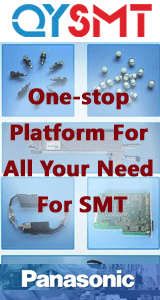DfR Solutions (acquired by ANSYS Inc)

DfR Solutions has world-renowned expertise in applying the science of Reliability Physics to electrical and electronics technologies, and is a leading provider of quality, reliability, and durability (QRD) research and consulting
DfR Solutions specializes in providing knowledge- and science-based solutions to maximize and accelerate the product integrity assurance activities of their clients in every marketplace for electronic technologies (consumer, industrial, automotive, medical, military, telecom, oil drilling, and throughout the electronic component and material supply chain). The company’s integrated use of Physics of Failure (PoF) and Best Practices provides crucial insights and solutions early in product design and development and throughout the product life cycle.
In today’s competitive marketplace, you can’t afford to deliver an unreliable product. Working with you throughout the life cycle of the product, DfR Solutions can lend a guiding hand regarding quality, reliability, and durability (QRD) issues. DfR not only helps you solve your problems — we can prevent them from happening in the first place! Services we offer include Technology ion, Design Reviews, Supply Chain Assessment, Testing/Product Qualification, Field/Customer Returns, and more.
DfR Solutions (acquired by ANSYS Inc) Postings
1 product »
Sherlock - Automated Design Analysis software
Wouldn't it be nice to see into the future? With Sherlock by DfR Solutions, you can. Sherlock is a new Automated Design Analysis Tool that allows you to predict product failure earlier in the design process, allowing you to design...
28 technical articles »
Pb-Free Reflow, PCB Degradation, and the Influence of Moisture Absorption
Sep 02, 2024 | Kerin O'Toole, Bob Esser, Seth Binfield, and Craig Hillman, and Joe Beers
The cracking and delamination of printed circuit boards (PCB) during exposure to elevated thermal exposure, such as reflow and rework, have always been a concern for the electronics industry. However, with the increasing spread of Pb-free assembly into industries with lower volume and higher complexity, the occurrence of these events is increasing in frequency. Several telecom and enterprise original equipment manufacturers (OEMs) have reported that the robustness of their PCBs is their number one concern during the transition from SnPb to Pb-free product. Cracking and delamination within PCBs can be cohesive or adhesive in nature and can occur within the weave, along the weave, or at the copper/epoxy interface (see Figure 1). The particular role of moisture absorption and other PCB material properties, such as out of plane expansion on this phenomenon is still being debated....
Creep Corrosion Of Electronic Assemblies In Harsh Environments
Mar 16, 2022 | Petri Savolainen and Randy Schueller
Creep corrosion occurs in electronics assemblies and it is reminiscent to electromigration but does not require electrical field to drive the reaction. Corrosive elements and moisture must be present for creep corrosion to occur. Sulfur is the most prominent element to cause creep corrosion in environments such as paper mills, rubber manufacturing, mining, cement manufacturing, waste water treatment etc., also including companies and locations nearby such industries. The main part of printed circuit board assembly (PCBA) to be affected is the PCB surface finish. Especially immersion silver is prone to creep corrosion, but it sometimes occurs in NiPd (lead frames), and to a lesser extent in ENIG and OSP surface finishes. As the use of immersion silver is increasing as PCB surface finish and electronics are more and more used in harsh environments, creep corrosion is a growing risk. In this paper we will present the driving forces and mechanisms as well as suitable tests and mitigation strategies against creep corrosion...
Solderability after Long-Term Storage
Mar 02, 2022 | Joelle Arnold, Cheryl Tulkoff and Greg Caswell
The effect of long-term storage on manufacturability and reliability is an area of major concern for companies that attempt to proactively manage component availability and obsolescence. A number of issues can arise depending on the technology and storage environment. Mechanisms of concern can include solderability, stress driven diffusive voiding, kirkendahl voiding, and tin whiskering. Of all of these, solderability / wettability remains the number one challenge in longterm storage....
Counterfeit Detection Strategies: When to Do It / How to Do It
Oct 12, 2021 | Greg Caswell
Counterfeit components have been defined as a growing concern in recent years as demand increases for reducing costs. In fact the Department of Commerce has identified a 141% increase in the last three years alone. A counterfeit is any item that is not as it is represented with the intention to deceive its buyer or user. The misrepresentation is often driven by the known presence of defects or other inadequacies in regards to performance. Whether it is used for a commercial, medical or military application, a counterfeit component could cause catastrophic failure at a critical moment....
Coatings and Pottings: A Critical Update
Aug 11, 2021 | Greg Caswell
Conformal coatings and potting materials continue to create issues for the electronics industry. This webinar will dig deeper into the failure modes of these materials, specifically issues with Coefficient of Thermal Expansion (CTE), delamination, cracking, de-wetting, pinholes/bubbles and orange peel issues with conformal coatings and what mitigation techniques are available. Similarly, this webinar will look at the failure modes of potting materials, (e.g Glass Transition Temperature (Tg), PCB warpage, the effects of improper curing and potential methods for correcting these situations....
Aug 13, 2020 | Greg Caswell [DfR], Matt Perry [H.B. Fuller], Haichuan Zhao [H.B. Fuller], Ralph Velazquez [H.B. Fuller]
The solar industry has driven solutions that result in electronics systems that are required to perform in outside environments for over 25 years. This industry expectation has resulted in solutions to protect the electronics from failure that can result from interaction with moisture, and various chemicals leading to corrosion and shorting of the systems. Potting and encapsulation compounds can impart the very high level of protection from environmental, thermal, chemical, mechanical, and electrical conditions that the solar applications demand....
Accurately Capturing System-Level Failure of Solder Joints
Feb 05, 2020 | Maxim Serebreni
Consortium Projects - Thermal Cycling Reliability</p> <ul> <li>Consortium projects allow for joint research to investigate the reliability of multiple solder alloys under a variety of environmental stress conditions. </li> <li>Project jointly sponsored by iNEMI and HDP User Group and including CALCE and Universal consortium currently assessing 15 third-generation solder alloys..</li> </ul>...
Temperature Cycling and Fatigue in Electronics
Jan 01, 2020 | Gilad Sharon, Ph.D., Greg Caswell
The majority of electronic failures occur due to thermally induced stresses and strains caused by excessive differences in coefficients of thermal expansion (CTE) across materials.</p><p>CTE mismatches occur in both 1st and 2nd level interconnects in electronics assemblies. 1st level interconnects connect the die to a substrate. This substrate can be underfilled so there are both global and local CTE mismatches to consider. 2nd level interconnects connect the substrate, or package, to the printed circuit board (PCB). This would be considered a "board level" CTE mismatch. Several stress and strain mitigation techniques exist including the use of conformal coating....
Mar 06, 2019 | Maxim Serebreni, Dr. Nathan Blattau, Dr. Gilad Sharon, Dr. Craig Hillman
Electronic assemblies use a large variety of polymer materials with different mechanical and thermal properties to provide protection in harsh usage environments. However, variability in the mechanical properties such as the coefficient of thermal expansion and elastic modulus effects the material selection process by introducing uncertainty to the long term impacts on the reliability of the electronics. Typically, the main reliability issue is solder joint fatigue which accounts for a large amount of failures in electronic components. Therefore, it is necessary to understand the effect of polymer encapsulations (coatings, pottings and underfills) on the solder joints when predicting reliability.
This paper presents the construction and validation of a thermo-mechanical tensile fatigue specimen. The thermal cycling range was matched with potting expansion properties in order to vary the magnitude of tensile stress imposed on solder joints...
Multilayer Ceramic Capacitors: Mitigating Rising Failure Rates
Dec 05, 2018 | Dock Brown
The multilayer ceramic capacitor (MLCC) has become a widely used electronics component both for surface mount and embedded PCB applications. The MLCC technologies have gone through a number of material and process changes such as the shift from precious metal electrode (PME) configurations which were predominantly silver/palladium to base metal electrodes (BME) dominated by nickel. Each of these changes were accompanied by both quality and reliability problems. The MLCC industry is now in the midst of an unprecedented set of challenges similar to the Moore’s Law challenges being faced by the semiconductor industry. While capacitor failures have historically been responsible for a significant percentage of product field failures (most estimates are ~30%) we are seeing disturbing developments in the low voltage (<250V) commodity part infant mortality and wearout failure rates....
18 more technical articles from DfR Solutions (acquired by ANSYS Inc) »
1 news release »
DfR Solutions and ISD Italia Partner on Sherlock ADA™ Software
![]() Dec 21, 2011 | ISD Italia has joined forces with DfR Solutions’ North American (NA) sales teams in offering DfR Solutions’ revolutionary automated design analysis tool, ‘Sherlock’. DfR Solutions’ partnership with ISD will strengthen and expand Sherlock’s penetration among European users of EDA/CAD/CAM solutions.
Dec 21, 2011 | ISD Italia has joined forces with DfR Solutions’ North American (NA) sales teams in offering DfR Solutions’ revolutionary automated design analysis tool, ‘Sherlock’. DfR Solutions’ partnership with ISD will strengthen and expand Sherlock’s penetration among European users of EDA/CAD/CAM solutions.







.gif)
